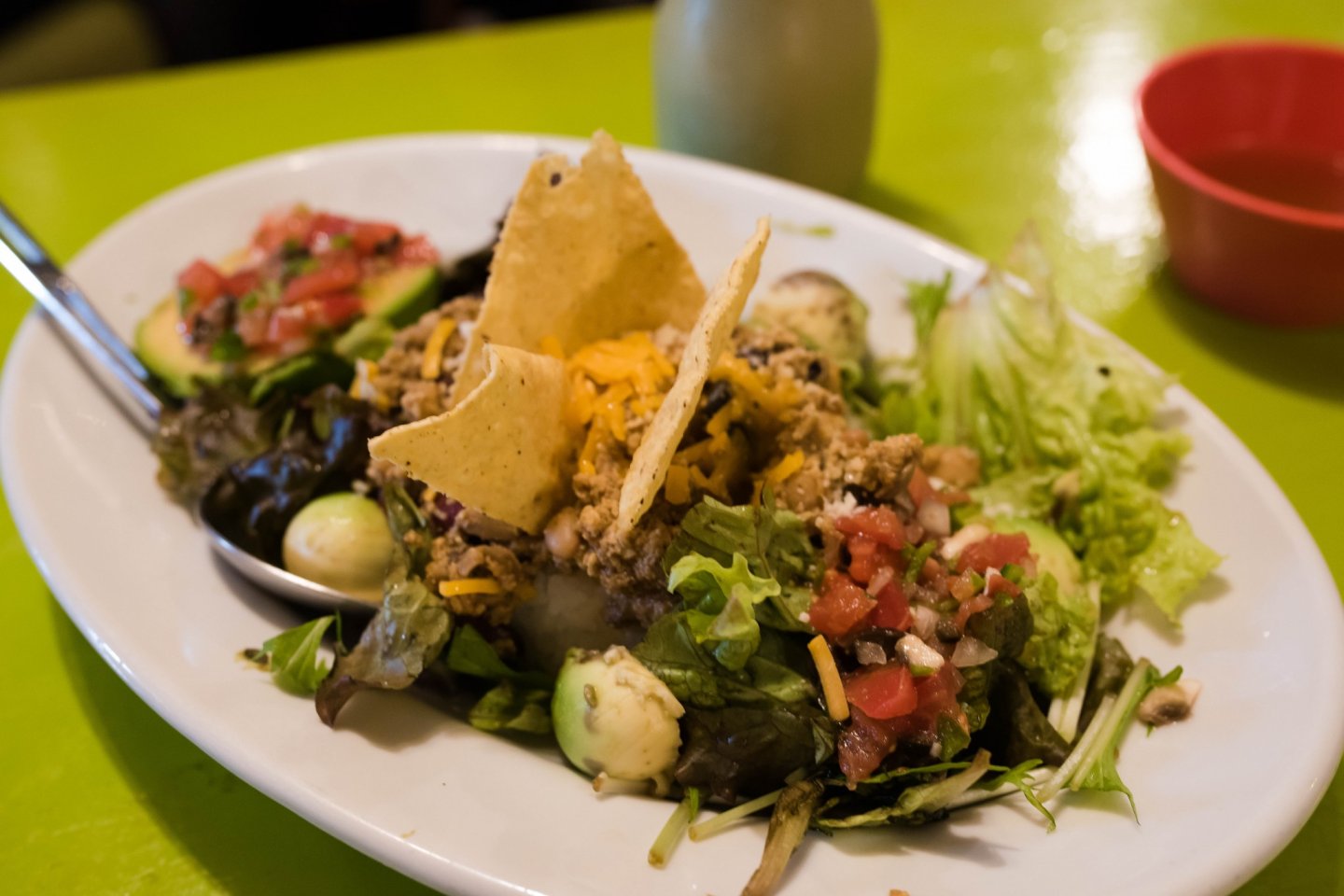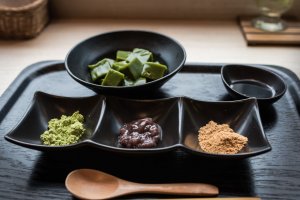There are moments during a trip to Japan as a vegetarian that you want to sit down and order something off the menu with certainty that there will be no surprise meat involved in the preparation or presentation of your food.
If this happens to you and you consume something you didn't plan to, don’t worry, we have all been there. On one occasion in Osaka I thought I was fine until I had my last mouthful of an egg onigiri from a 7/11 and felt a chunk of meat coarsely slip down my throat. I went home and Googled what it was and I had eaten a pork ramen egg onigiri. The rice of which had been cooked in ramen juices and a chuck of meat was in there. Delicious for some, strange for me.
On a side note, you will need to decide at some stage whether you will make an exception for the trip and consume dashi which is fish stock used in a lot of meal preparation / broths. You can use the phrase Dashi to katsuobushi wa taberaremasen to try and get around this to make sure the meal is truly plant based however, your food options will be quite limited.
Here are my 5 tips to try and take the stress headaches out of eating vegetarian / vegan in this wonderful country.
1. Download the 'Happy Cow' application
Most of us vegetarians and vegans are aware of this application. If you are not, it basically lists all the vegetarian and vegan cafes and restaurants that you can consume food from in your area. However, some places in Japan will have one or two restaurants on the list and you may start to feel like you’re stalking them. Primarily I use Happy Cow as a starting point. After finishing a meal at one of the recommended places I always try and make small talk with the owner and ask where else in the area I can get good vegetarian / vegan food. There are always places that have not been included in the application and they may do one or two good dishes as opposed to an entire restaurant devoted to plant based food.
2. Don't panic when Happy Cow doesn't help you
This has also happened a lot during my time further west in Japan. You do a search in the application and something shows up 45km's away. Your best bet is to find an Izakaya bar as there is always miso, tempura and tofu. Alternatively you can visit your local supermarket to find pre-made options like noodles, sushi or salads (generally staff are helpful) Lastly, head into any restaurant and use a translating application to navigate through a menu solo.
2. Download Google Translate application
Download the offline version of this application and you can use it when you have no wifi / data. There is a function that I found out about after the pork ramen debacle that lets you take pictures of the Japanese writing and it will translate it for you. This is about 80% effective, sometimes it says ‘in the brain garden’. If all else fails you can type into it “ Does this have meat/fish in it?” and show it to the wait staff or cashier with a smile that says please help me I am about to eat my own arm.
3. Learn some helpful Japanese phrases
My phrase book for Japan told me that all I had to say was Watashi wa bejitarian desu. Piece of cake, I’ve got this, I thought to myself. The only problem is that this phrase is often not understood by restaurant staff as vegetarian is not a widely used word.
Thank you $15 phrase book.
I wandered in and out of 10 places for my first meal in Japan and ended up getting an overpriced falafel burger. I felt bad about it as the kebab van near my house in Melbourne makes these 6 nights a week for half the price.
I have tried showing restaurant staff the following on my phone a few times and it seemed to do the trick 7 times out of 10.
関係者各位
私はベジテリアンですから肉と魚と魚製品が食べられません。料理から除いて頂きます様お願い致します
Translation: To whom it may concern: I am a strict vegetarian. Therefore I do not eat any meat, fish or fish products. Please make sure that my food does not include any of these items.
Another phrase to use is Niku to sakana wa taberaremasen (肉と魚は食べられません - I cannot eat meat or fish)
4. Tell your Ryokan host in advance
The experience of staying at a traditional Ryokan in Japan is a must for anyone wanting to dive head first into the culture and hospitality that Japanese people are renowned for. One of the draw cards of staying in these places besides the robe / slipper combo is the home cooked meals. They are often elaborately presented with many different textures and flavours to dig politely into. Due to the planning that goes into these meals it is best to contact your host ahead of time to explain that you do not eat meat / fish / animal products (if applicable). This ensures you can experience the food and takes the stress of out the stay for your host and you.
5. Planning
Twenty minutes of research about where you could try and eat before you head off to explore for the day will cut 2 hours of wandering around in a hungry glaze amongst crowds of people. In my case, this generally ends in a 7/11 snack binge before finally finding somewhere for a second lunch or just giving up and eating Matcha sweets. (They’re green and healthy right?)
Japan has loads of delicious plant based options in their menus however, you need to dig past the ramen soaked rice in 7/11 and skip over to the bottom of page 3 of the menu with guidance from your wait staff.
Happy plant based hunting!

































